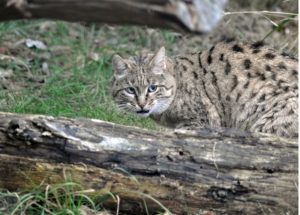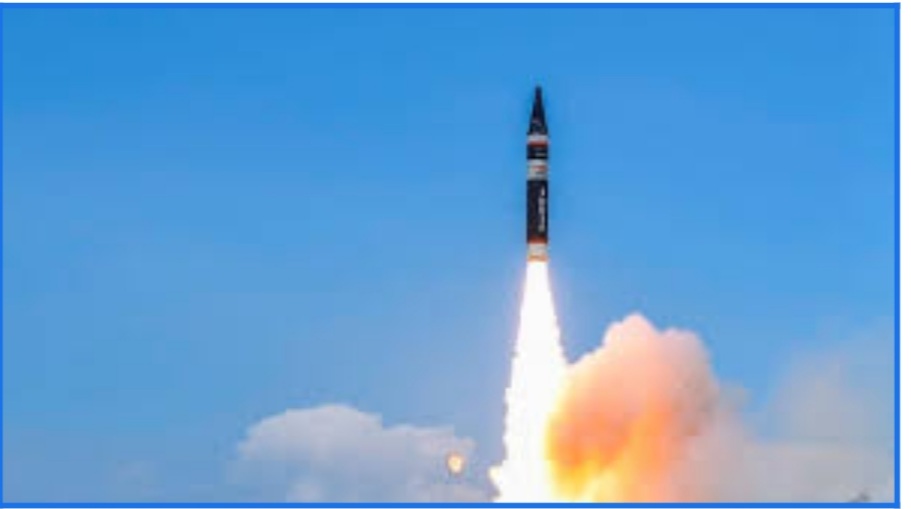Current Affairs 21st December 2021
Daily Current Affairs – Topics
- Sacrilege and Lynching
- Agni-P Missile
- Amendment to Minerals Rules
- Bill for linking Aadhaar and Voter ID
- Indian Desert Cat
1.Sacrilege and Lynching
#GS2-Government Policies
Context
- Following the lynching of a young man at the Golden Temple, a young man was slain in Punjab’s Kapurthala over a’sacrilege attempt’ (disrespect the holiest book).
In depth information
Sacrilege
- This isn’t the first time someone has been slain for allegedly sacrileging a Sikhism-related sacred book. Several such lynchings have occurred in recent years.
- Punjab has led the country in the number of sacrilege cases for several years.
- Punjab had the greatest rate of offences (number of instances divided by population in lakhs) registered under Sections 295 to 297 of the Indian Penal Code (IPC), which deal with sacrilege, from 2018 to 2020, according to data from the National Crime Records Bureau (NCRB).
Sikhism’s be-adbi:
- The concept of beadbi, or sacrilege, in Sikhism stems in part from Sikhs’ belief that the Guru Granth Sahib is a living Guru.
- Guru Gobind Singh, the 10th Guru, ordained it in this manner. The Guru Granth Sahib is sacred, as is everything related with it. Because the Guru is seen as a living being, any harm or disrespect to it is considered a terrible offence by Sikhs.
- Aside from the Guru Granth Sahib, the ‘gurdwara,’ which literally means ‘guru’s home,’ and the things utilised in the Guru’s worship are sacred.
- The ‘dastaar’ or ‘pagri,’ the headpiece worn by Sikhs, as well as the ‘kirpan,’ the sword carried by baptised Sikhs, are both regarded sacred.
Acts of Be-adbi:
- Disrespect for the Sikh Gurus was considered beadbi even during the Mughal era.
- In 1984, the Army entered the Golden Temple or Darbaar Sahib in Amritsar, the holiest of Sikh sanctuaries, as part of Operation Blue Star.
Lynching as a Problem
1.Law:
- There is currently no codified law in India against lynching; however, Sub Section (a) of Section 223 of the Criminal Procedure Code, 1973 contains a provision for persons being charged jointly for the same offence committed in the course of the same transaction that is applicable to two or more people.
2.Attacks from:
- Vigilante assaults, murder and attempted murder, harassment, assault, gang-rape, and other lynching-related attacks are common.
- Victims are frequently beaten, shackled, stripped, and hanged, resulting in serious injuries or death.
3.Punishment:
- Section 302 of the Indian Penal Code reads as follows:
- This section of the IPC deals with the punishments for murder, i.e., the person who commits murder is sentenced to death or life imprisonment.
- In many circumstances, the convict may face further punishment.
- Section 304 of Indian Penal Code:
- This section discusses the penalties for negligent homicide that does not amount to murder.
4.Life imprisonment for life:
- If the conduct is done with the intent to kill or cause injury that is likely to kill, the penalty is 10 years in jail and a fine.
- If the conduct is done with the knowledge that it is likely to cause death or injury that is likely to cause death, but without any intention, it is punishable by imprisonment for up to 10 years, a fine, or both.
- The punishment for attempting to murder is outlined in Section 307 of the Indian Penal Code.
- A person who commits an act with the intent or knowledge of causing death is guilty of murder and faces a sentence of up to ten years in prison as well as a fine.
- The punishment for intentionally causing harm is defined under Section 323 of the Indian Penal Code.
- Whoever causes harm deliberately, save when provoked as per section 334, is subject to a year’s imprisonment, a fine (up to one thousand rupees), or both.
SC recommendations
- To establish a strong example in incidents of mob violence, there should be a “distinct offence” for lynching, and trial courts should typically award the maximum punishment upon conviction of the accused person.
- State governments will be required to appoint a senior police officer in each area to take preventative measures against mob violence and lynching.
- The state governments must identify districts, subdivisions, and villages where recent reports of lynching and mob violence have been made.
- Any inter-district coordination concerns should be brought to the attention of the DGP so that a strategy to combat lynching and mob violence may be devised.
- Every police officer is responsible for dispersing a mob that has a history of causing violence, whether under the pretence of vigilantism or not.
Conclusion
- The Centre could even call for penal measures against political leaders found guilty of inciting mobs when drafting the laws.
- Because the number of occurrences of mob lynching is on the rise, a zero-tolerance policy should be imposed.
2.Agni-P Missile
#GS3-Defence technology
Context
- The Agni-P, a next generation nuclear-capable ballistic missile, was successfully tested off the coast of Odisha on Dr. APJ Abdul Kalam’s island.
- This is the missile’s second test. The first test was conducted in June of last year.
In depth information
Agni Prime Missile

- The Agni-P is a two-stage solid-propellant missile with a dual redundant navigation and guidance system.
- It can travel up to 2000 kilometres.
- It’s a surface-to-surface ballistic missile with a canister.
- Canisterization reduces launch time while also improving storage and mobility.
- It is a new generation enhanced form of the Agni class of missiles with increased features like as manoeuvrability and accuracy.
- Comprised entirely of composite materials.
- Improving India’s credible deterrence capabilities, including enhanced manoeuvrability and accuracy over previous Agni missiles.
In India’s Missile Technology
- Several Indian kings used rockets as part of their fighting technology before to independence.
- Hyder Ali, the monarch of Mysore, began arming his troops with iron-cased rockets in the mid-eighteenth century.
- By the time Hyder’s son Tipu Sultan died, each brigade of his army, which numbered roughly 5,000 rocket-carrying troops, had a company of rocketeers attached to it.
- India had no indigenous missile capability at the time of independence.
- In 1958, the government established the Special Weapon Development Team.
- Later, it was renamed the Defence Research and Development Laboratory (DRDL).
- Project Devil, a medium-range Surface-to-Surface Missile development programme, began in 1972.
- Project Devil’s development of components and systems laid the groundwork for the future Integrated Guided Missiles Development Programme (IGMDP).
- Under the IGMDP, DRDL was working on numerous missile technologies by 1982.
The current state of hypersonic technology in India and how it compares to other countries:
- India has been working on this for a few years and is currently in fourth place, trailing only the United States, Russia, and China.
- In September 2020, the Defense Research and Development Organization (DRDO) successfully tested a Hypersonic Technology Showed Vehicle (HSTDV) and demonstrated its hypersonic air-breathing Scramjet technology.
- India has created its own cryogenic engine, which it showed in a 23-second flight.
- Using HSTDV, India will attempt to develop a hypersonic cruise missile.
- So far, only Russia has displayed its hypersonic missile capability, while China has shown its HGV capability.
- Within four years, India is projected to have a hypersonic weapons system with medium- to long-range capability.
Conclusion
- The United States leads the world in missile technology, although China is catching up.
- China has provided Pakistan with technology, but acquiring a technology and really applying it, as well as evolving and adopting a policy, are two very different things.
- India is also among the top three or four nations at a fairly advanced stage.
- India is developing Agni VI and VII, which are expected to have a substantially longer range.
- Pinaka rocket systems were also designed in close collaboration with the authorities that would employ them.
3.Amendment to Minerals Rules
#GS2-Growth & Development
Context
- The Minerals (Evidence of Mineral Contents) Second Amendment Rules, 2021, and the Mineral (Auction) Fourth Amendment Rules, 2021, have been notified.
- The Minerals (Evidence of Mineral Contents) Regulations, 2015 [MEMC Rules] and the Mineral (Auction) Rules, 2015 [Auction Rules] will be amended by these two rules.
- The Mines and Minerals (Development and Regulation) (MMDR) Amendment Bill, 2021 was previously approved by both the Lok Sabha and the Rajya Sabha.
In depth information
Minerals are a type of mineral that can be (Evidence of Mineral Contents) 2021 Second Amendment Rules:
- It will allow anyone (who wishes to participate in the auction) to offer acceptable blocks for auction for a composite licence, where the mineral potentiality of the blocks has been determined using existing geoscience data.
- The mineral potentiality of the blocks proposed will be assessed by a committee appointed by the State Government, and the block will be recommended for auction.
Fourth Amendment Rules for Minerals (Auctions), 2021:
- It would state that if a person’s proposed blocks are notified for auction, that person would be given the option of depositing only half of the bid security amount in the auction of his proposed blocks.
- In all situations, part surrender of the mining lease area has been permitted.
- Part surrender had previously only been permitted in the event that forest clearance had not been granted.
- Provisions have also been introduced to enable for the disposal of overburden/waste rock/minerals that are less than the threshold value and are generated during the mining or beneficiation of the mineral.
- The minimum acreage required to grant a mining lease has been reduced from 5 hectares to 4 hectares. A minimum of 2 ha. is provided for certain specified deposits.
- Aim: To identify more mineral blocks for auction in order to speed up exploration and production, consequently increasing mineral availability in the country.
Significance:
- It will boost competition and encourage more people to participate in auctions.
- It will make it easier for state governments to identify additional blocks for the composite licence sale.
Mining-related initiatives:
- Initiatives are being taken as part of the National Mineral Policy 2019 to guarantee that auctioned greenfield mineral blocks are operationalized as soon as possible.
- Tax rationalisation is also being discussed in the mining industry.
- Enhancing private investments in the mineral sector and implementing other reforms have been announced as part of the Atmanirbhar Bharat programme.
- Funds of the District Mineral Foundation
4.Bill for linking Aadhaar & voter ID
#GS2-RPA
Context:
- The Election Laws (Amendment) Bill, 2021, aims to alter the Representation of the People Act to include essential measures such as voluntary voter ID linking with Aadhaar.
In depth information
Need for linking of Aadhaar and Voter ID:
- Since 2015, the Election Commission has been requesting this. To link the Aadhaar number with the voter ID number, the EC created the National Electoral Law Purification and Authentication Program. The connection, according to the report, will weed out repeated enrolments under one person’s name.
- The programme was put on hold at the time because the Supreme Court ruled that using Aadhaar to access welfare programmes would be voluntary.
- As a result, the EC revised its plan and said that the linkage would be optional.
Other clauses in the bill include:
- It will allow new voters to register on four qualifying dates instead of the current January 1 each year.
- Anyone turning 18 on or before January 1 is currently eligible to register as a voter. After a year, anyone born after January 1 will be required to enlist.
- According to the bill, in addition to January 1, there will be three more qualifying dates in each calendar year: April 1, July 1, and October 1.
- The reforms also make it possible for service voters to vote in gender-neutral elections.
- The modification will help to make the statutes “gender neutral” by replacing the word “wife” with “spouse.”
- Currently, an Army officer’s wife can register as a service voter, but a woman officer’s husband cannot. This will change as the term ‘wife’ is replaced by the term’spouse.’
What Are the Concerns About Aadhaar Seeding and Voter ID?
- The proposal doesn’t say how much data will be shared between the ECI and UIDAI databases, how consent will be obtained, or whether consent to link the databases may be rescinded.
- Any move to allow data exchange could be problematic in the absence of a strong personal data protection law – a Bill in that regard has yet to pass Parliament. There would be an invasion of the individual’s privacy.
5.Indian Desert Cat
#GS3- Species
Context
- For the first time, an Indian desert cat has been spotted in Madhya Pradesh’s Panna Tiger Reserve (PTR).
- A desert cat has also been spotted in the state’s Nauradehi refuge.
In depth information
Indian Desert Cat Information

- The Asiatic Wildcat, or Asian Steppe Wildcat, is another name for the Indian Desert Cat.
- Felis lybica is the scientific name for this species.
- Its fur is more yellow or reddish in colour, with characteristic little black or reddish-brown patches and stripes, and it is smaller than the European wildcat.
- The species’ toes have cushion-like hair that helps them adjust to the changing desert temperatures.
- This cat can survive without water and can be found in deserts.
- It can be found all across the world, from the Caucasus and Turkey to western India, Kazakhstan, western China, and southern Mongolia.
Status of Conservation:
- The wildcat (including Felis silvestris and Felis lybica) is considered as Least Concern in the IUCN Red List of Threatened Species.
Our Courses
Watch Our Videos on YouTube

